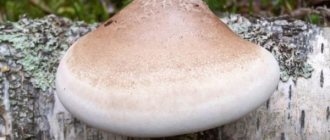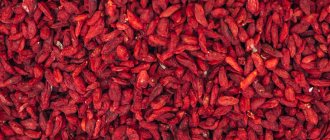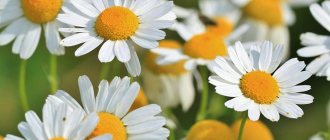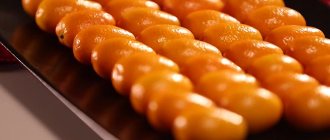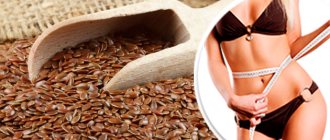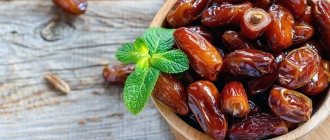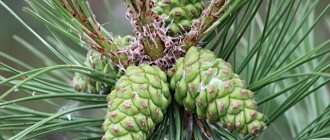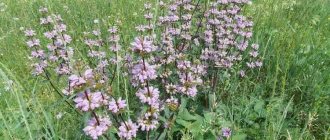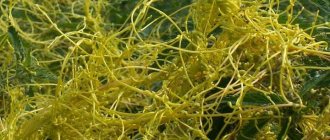Bracken fern description
Bracken is a type of fern, a spore-bearing plant that is found in wild places almost anywhere in the world. Ferns are also grown in garden conditions as decorative elements. The plant gets its name from its leaves, which have triple fronds. They resemble the open wings of an eagle, which is what kind of fern got its name. The leaves of the plant are divided into segments, which decrease in size as they move towards the top.
Bracken is a large plant that can grow more than a meter in height. Under good growing conditions, it can live up to several decades, constantly reproducing and creating difficult-to-plant plantations.
The plant is poisonous, but people use it in traditional methods of treating many diseases and eat it.
General description, photo
Bracken fern is a cosmopolitan plant that has spread throughout the globe, with the exception of polar regions and deserts. However, it is most often found in temperate climate zones. It is a herbaceous perennial fern belonging to the Dennstedtiev family. This is one of the largest representatives of the family, never forming bushes. The height of the shoots of specimens growing in the wild in Russia rarely exceeds 60 cm, but in the southern regions the bracken fern sometimes looks like a grassy palm tree, under which an adult can fit.
Varieties of Bracken
Today, there are 4 main varieties of common bracken, which are found in different parts of the planet:
- common bracken – pteridium aquilinum var. feei (W. Schaffn. exFée) Maxon;
- Pteridium aquilinum var. lanuginosum (Bong.) Fernald;
- Pteridium aquilinum var. latiusculum (Desf.) Under. Ex A. Heller;
- Pteridium latiusculum (Desf.) Hieron. Ex REFr. Found in China, Japan, Taiwan, northern Europe, almost everywhere in Canada and the USA, northern Mexico;
- Pteridium aquilinum var. pseudocaudatum (Clute) A. Heller.
Bracken distribution
Bracken is an unpretentious plant that lives in almost every corner of the world, with the exception of the Arctic and desert parts of the world. It grows in forest areas, usually in coniferous or deciduous forests, places that do not have a lot of light. Varieties of fern can also be found in the steppe zone.
Places such as various hills and mountain ranges with light soils and shade are excellent for propagation. In addition, the plant easily takes root in areas of livestock grazing and fires. This feature lies in the vegetative method of propagation, which ensures rapid growth and deep-lying roots of the fern.
The fern is not common in European areas, but some people grow it in garden conditions. Additionally, some countries consider the fern to be a weed that is difficult to control. The reason for this phenomenon is good soil for the propagation of this plant.
What are the benefits of bracken fern for humans?
Even in ancient times, fern was valued for its beneficial properties. For hundreds of years, it has been present in the diet of many peoples of Eastern cultures.
The plant “from top to root” is used in cooking, cosmetology, and medicine. It is excellent for diets, as it has a low calorie content and is easily digestible.
Bracken fern grows almost everywhere. Young leaves that have not yet bloomed, the so-called snails, are suitable for food. At a later date, the plant becomes poisonous and is dangerous to eat.
Important! Freshly picked leaves that have not been pre-processed should not be used for food. They can cause not only nausea and vomiting, but also general intoxication of the body.
Calorie content of bracken fern
Bracken leaves are low in calories, so they are often used in many dietary dishes. Nutritionists recommend adding it to salads and as a side dish for meat dishes. Decoctions of this miraculous plant are very useful.
Calorie content of bracken is 34 kcal per 100 g.
As for nutritional value, it looks like this:
- fats - 0.4 g;
- proteins - 4.55 g;
- carbohydrates – 5.54 g.
The proteins that make up bracken are largely similar in their properties to crops such as oats and wheat. In addition, in terms of the amount of protein, fern is not inferior to such common crops as honey mushrooms, cabbage and potatoes.
However, the main feature of the plant is the high concentration of biologically active elements.
Vitamin content
The rhizome and leaves of bracken fern contain the following beneficial substances:
- carotenoids (lutein, carotene);
- lipids;
- steroids;
- tannins;
- glucositol and thiaminase.
- organic acids (vanillic, cinnamic, caffeic, aspartic, nicotinic, coumaric, etc.);
- carbohydrates (arabinose, xylose, fructose).
Attention! The significant presence of vitamin C in the plant made it possible to include fern extract in preparations used in chemotherapy.
Among other things, bracken fern holds a leading position compared to other plants with a high content of vitamins. Scientific research has confirmed that the plant contains:
- copper;
- vitamin E;
- magnesium;
- calcium;
- potassium;
- iron;
- ascorbic acid.
Home care
Bracken can be grown in almost any conditions. It can get along next to other flowers and bushes.
Features of care after purchase
Before purchasing a plant, you should inspect its leaves for integrity and the presence of yellowness on the leaves. Immediately after purchase, it must be placed in a dark place, and the next day transplanted into another pot.
The pot for the fern must be chosen wide so that the roots of the plant can be freely located in it, and the sand mixture that bracken loves can be used as soil.
Lighting
Bracken loves dark places that receive minimal sunlight. Therefore, when planting a plant, you can place it in the shade of bushes or trees. With the right lighting, the bush becomes a rich green color with bright leaves and well fluffed. Under indoor growing conditions, the pot should be placed in the northern part of the room.
Temperature
The plant takes root well at temperatures up to +25 degrees. The fern does not need to be moved from one temperature to another, deliberately creating fluctuations. In the summer, it is necessary to plant the bush outside, where there is no strong wind or drafts. In winter, the fern must be kept away from heating elements. At this time, the optimal temperature for the plant is 15-20 degrees. Bracken overwinters normally in open ground, while the leaves of the plant fall off and the roots lie under a deep layer of soil.
Air humidity
Ferns must be planted in places with high air humidity, since these conditions are well suited for this plant. When grown at home, bracken must be regularly sprayed at the crown. It is necessary to moisten the leaves and fronds with clean water to avoid limescale deposits on the leaves and crown. You can also place containers of water next to the fern so that the plant absorbs the evaporation. In garden plots, it is better to plant bracken in places located with bodies of water or in areas of constant soil moisture.
Watering
For good plant growth, the fern must be watered regularly. In this case, the soil should always be moist, but the roots should not be allowed to remain constantly in water. The best option is to regularly water the plant with small portions of water to avoid dryness and excessive overwatering. In winter, you should water the soil much less frequently than in summer.
Fertilizers and fertilizing
Bracken, like other plants, should be fertilized regularly. Feeding should begin in the spring, when it emerges from hibernation and the first shoots appear. Fertilize should be moderate, using mineral complexes intended for ferns. Then every month, before the onset of winter frosts, water with fertilizer. In winter, feeding the plant should be stopped.
Transfer
Bracken does not like constant replanting. When growing ferns in open ground, this is not recommended at all. If bracken is grown indoors, it is necessary to replant it no more than once every three years. It is necessary to replant a fern when it grows and the pot becomes small. When replanting, you should choose a pot in which the plant will be free and comfortable. You need to place a stone mixture at the bottom of the pot. Some gardeners prefer to use broken bricks instead of stones, which also suit the plant.
Trimming
The fern does not need to be pruned as it sheds its leaves during the winter. When grown at home, it does not shed fronds. In open ground, the plant sheds its fronds when it freezes and produces new shoots in the first warm days of spring.
Benefits of bracken fern in food
Today, bracken fern is often used in cooking. A properly prepared plant has a pleasant taste and retains all the beneficial properties that nature has endowed it with.
Pickling the tender leaves of the plant has become especially popular. In terms of the method of preparation, it is reminiscent of pickling mushrooms, and the taste of the pickled plant is similar to them.
Whatever you plan to cook from fern, its shoots must be boiled for 10 - 12 minutes. The water is slightly salted and drained after cooking. The product prepared in this way can be fried, marinated or stewed.
Traditionally, fern was cooked in a copper vessel. It was believed that this helps preserve all the valuable properties of the product and improves its taste. Nowadays there are cookware options on sale that can successfully replace old copper basins.
Stewed fern with onions and various types of meat is very tasty. To do this, shoots boiled for 30 minutes are combined with stewed meat, onions are added and the whole thing is simmered until fully cooked. It’s good to add soy sauce to such a dish: it will add zest to the dish and make it more refined. It can be consumed both hot and cold.
In addition, Far Eastern bracken is used in the preparation of soups, cabbage soup, side dishes and other traditional dishes. Some chefs even prepare desserts from the plant.
Very often, stewed fern is combined with rice. Then oriental notes are felt in the dishes.
There are many cooking options. If you wish, you can always find something that suits your taste and will benefit your body.
Fern propagation
Bracken can reproduce by spores and vegetatively. The vegetative method is a common method of fern growth in European and northern regions. In open ground, the bush is more adapted to propagation vegetatively.
Reproduction by spores
Reproduction by bracken spores occurs in autumn. By the end of summer, small brown sporangia resembling tubercles form on the leaves of the fern. They are located along the rim of the sheet, crowded.
In early autumn, it is necessary to cut off and allow the leaves of the plant with sporangia on the edges of the frond to dry. Then the spores are scraped from the leaves onto a sheet of paper. The resulting spores must be dried and placed in a dry place before January. In mid-winter, the spores must be planted in cleaned, loose soil, which is regularly watered. The container with planted fern spores must be kept in a warm, bright place; it is advisable to cover the pot with cellophane or glass to allow condensation to form inside.
Ferns planted in this way must be regularly ventilated, exposing the soil for several hours. The first fern shoots appear approximately 8 weeks after planting. After this, you can stop snatching the pot, providing air and moisture to the new shoots.
As the ferns grow, they are planted in separate pots, and when the warm days of May arrive, the bracken can be transplanted into the garden or onto an open surface in a darkened area.
Reproduction by dividing the bush
Another way to propagate bracken fern is by dividing the bush. This type of reproduction is more efficient and gives greater results. An adult bush has large roots that easily take root after pruning or dividing.
The plant should be replanted in mid-spring, after frost has passed. In this case, it is necessary to dig up an adult fern and divide the rhizomes, which have buds, into several parts. The places where the roots are cut must be treated with charcoal to prevent rotting of the rhizome. Then you need to immediately plant the separated parts in moist soil and water the plant. Bracken easily takes root in the soil and produces new shoots.
Instructions for salting bracken fern
For pickling, young, succulent shoots of bracken fern are used, collected from plants in an early stage of development with an unbranched top, with a diameter of at least 5 mm and a length of at least 15-30 cm. The root part is cut off by 5-6 cm.
It is advisable to carry out salting no later than 3-4 hours after collection. Use barrels or containers of suitable volume. They must be durable, clean, free of foreign odors, and not leak.
The process occurs in two stages.
First pickling
- Prepared shoots are collected in bunches with a diameter of 5-6 cm.
- A 3-5 cm layer of salt is poured onto the bottom of the prepared containers.
- Bunches of fern are placed on it and sprinkled with salt.
- Repeat the process.
- Salt 7-8 cm thick is poured onto the top layer of fern.
- Place a lattice or a circle with holes on which a pressure is placed equal to the weight of the planted shoots, that is, 100% of the weight of the fern.
The duration of the first salting is 2-3 weeks.
The amount of salt is 50% by weight of raw materials.
The weight of the oppression is 100% of the weight of the raw material.
After the end of the first salting period, the brine is drained. After it has drained, the oppression and circle are removed, and the fern is quickly transferred to another container for the second salting.
The drained brine cannot be used.
Second salting
The second fern salting is done with salt and its concentrated brine.
- A layer of salt is poured onto the bottom of the container or barrel, then a row of ferns is laid, sprinkled with salt and again a row of shoots.
- Thus, for the second salting, the fern is laid in the same order as for the first, but with the expectation that the upper bunches from the first salting are laid down and the lower ones are laid up.
- A 23% salt solution is poured into the container with the shoots, covered with a lattice or circle and pressed with a load of at least 30% of the weight of the fern that has undergone the first salting.
The duration of the second salting is 2-3 weeks.
The amount of salt is 30% by weight of raw materials.
Brine concentration – 23%.
The weight of the oppression is at least 30% of the weight of the raw materials.
After the second salting period has expired, the fern is removed, shaken off the salt, and placed in a large sieve or colander to drain the brine.
Then it is placed in clean glass jars. Fill them to the top; you cannot leave a large gap between the fern and the lid.
Application of bracken
Bracken, despite the fact that it is poisonous, is widely used by humans for medicinal purposes and as a culinary dish. The use of bracken has quite a lot of conflicting reviews. Therefore, before consuming and using the plant, it is necessary to consult with doctors about the beneficial properties of the product.
Bracken is widely used in human economic activities. The leaves are used to control pests and cockroaches. Silk dye is also made from the contents of the bush.
The rhizomes are rich in starch, so glue is obtained from bracken. Potash, extracted from the roots, is used to make glass and green soap. In addition, the roots were used as a means to dye wool fabrics black.
On the farm, Orlyak was used as fertilizer and lining for livestock. The leaves are also suitable for feeding livestock - goats and pigs.
Valuable food product
Bracken is widely used as a delicacy. Fern shoots, which are harvested during the season of their appearance, are eaten. Some people used the cooked plant instead of bread. In some regions of Russia, fern is canned and sold as a separate dish.
Pickled fern is eaten. Its taste is compared to salted mushrooms or asparagus, sometimes to olives. Japanese chefs also use this plant as a delicacy, dessert, or added to pies. The Japanese extract starch from the rhizomes of the plant, from which they prepare their signature dishes.
It is important to understand that eating a raw dish is life-threatening because the acid contained in fern leaves is poisonous. This can lead to severe poisoning and death. Only soaked, salted and boiled plants are used in cooking.
In Canada, bracken shoots can be added to flour after grinding. This gives baked goods an extra flavor. In addition, the leaves of the plant are used to store food in winter to prevent rotting. It is also used in the production of beer drinks.
Use in folk medicine
Bracken has found great use in folk remedies. It is used to treat many health pathologies. Decoctions of dried shoots are used as medicines. Decoctions help solve problems such as vomiting, diarrhea, and helminthic infestations. In addition, fern has found its use in the treatment of the following disorders:
- disorders of the nervous system - the decoction helps to tone the human body;
- reduced immunity – the tincture contains a large amount of vitamins and beneficial properties that help strengthen the body’s defenses;
- pain - decoction and tincture are used as a treatment for migraines, myalgia;
- diseases of the upper respiratory tract - the decoction has antitussive and expectorant properties;
- arterial hypertension – bracken tincture can lower blood pressure;
- seizures;
- wound healing property - ointments based on the plant help cure abscesses and eczema.
Bracken has long been used as a remedy against arthritis and arthrosis, rickets and rheumatism. Ointments are made from fern, which are rubbed into problem areas. Chinese medicine uses bracken as an antipyretic and a medicine to treat infectious hepatitis.
The rhizomes of the plant help speed up metabolism and stimulate growth. In addition, a decoction of the roots has long been used as a means to relieve stress and improve the body's performance.
Using bracken helps remove toxins and radiation from the body. It is also used as a means to optimize hormonal balance in the body and maintain normal blood glucose levels.
The poison contained in the leaves can lead to disastrous consequences, so it is impossible to treat problems with the help of the plant without consulting a doctor. The use of decoctions and infusions is prohibited for pregnant and lactating women, children, as well as people with an unclear allergic history.
Harm and contraindications
Despite such an abundance of beneficial properties, bracken also has its contraindications. First of all, you should remember that this plant contains toxic substances. This is why you should consult an experienced herbalist or homeopathic doctor before consuming it.
It is strictly forbidden to use bracken fern for food or to use infusions and decoctions based on it for treatment by women who are breastfeeding, as well as by pregnant women.
The dosage should be observed during the preparation of the medicine. If you ignore this rule, you may experience nausea, severe dizziness, vomiting, convulsions, and severe headaches.
Even death is possible, especially if you used low-quality shoots or fern leaves for treatment. Have you noticed any of the above symptoms after using the plant? Call a doctor immediately and rinse your stomach thoroughly.
